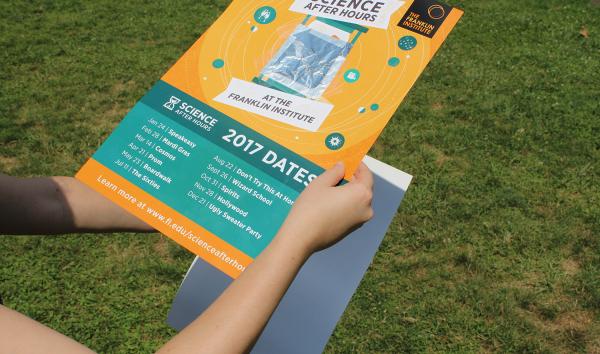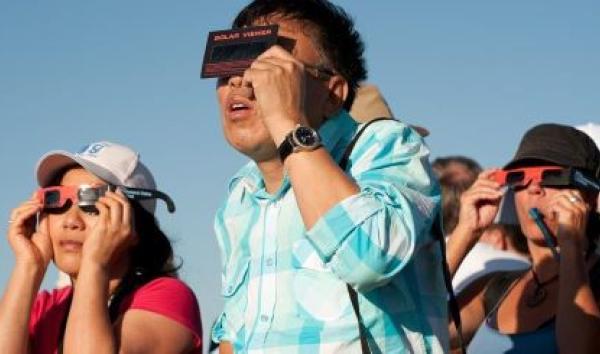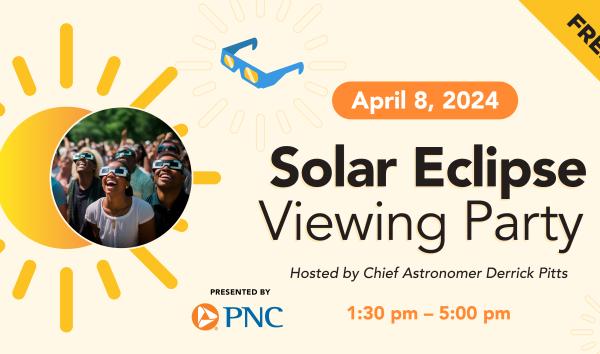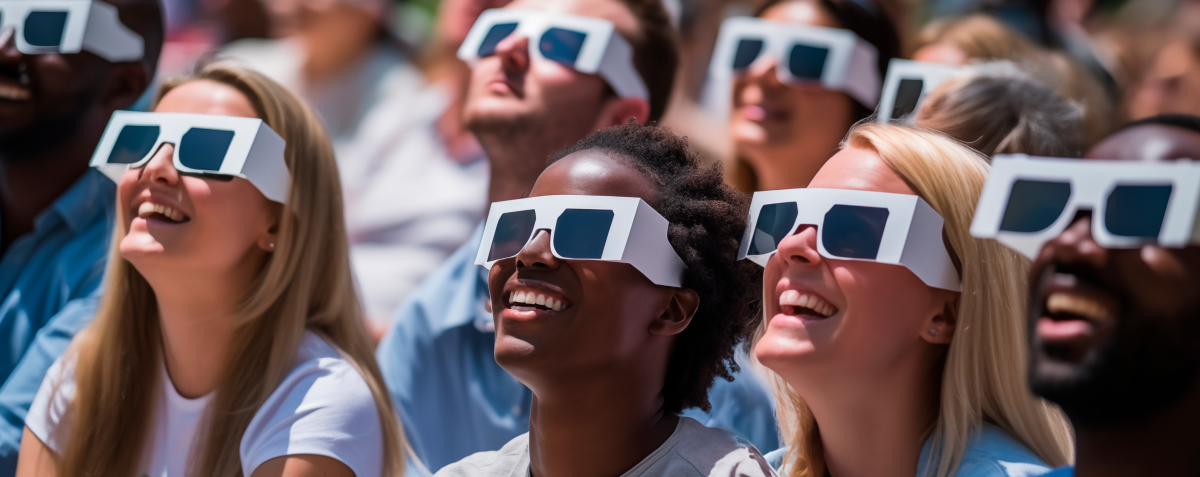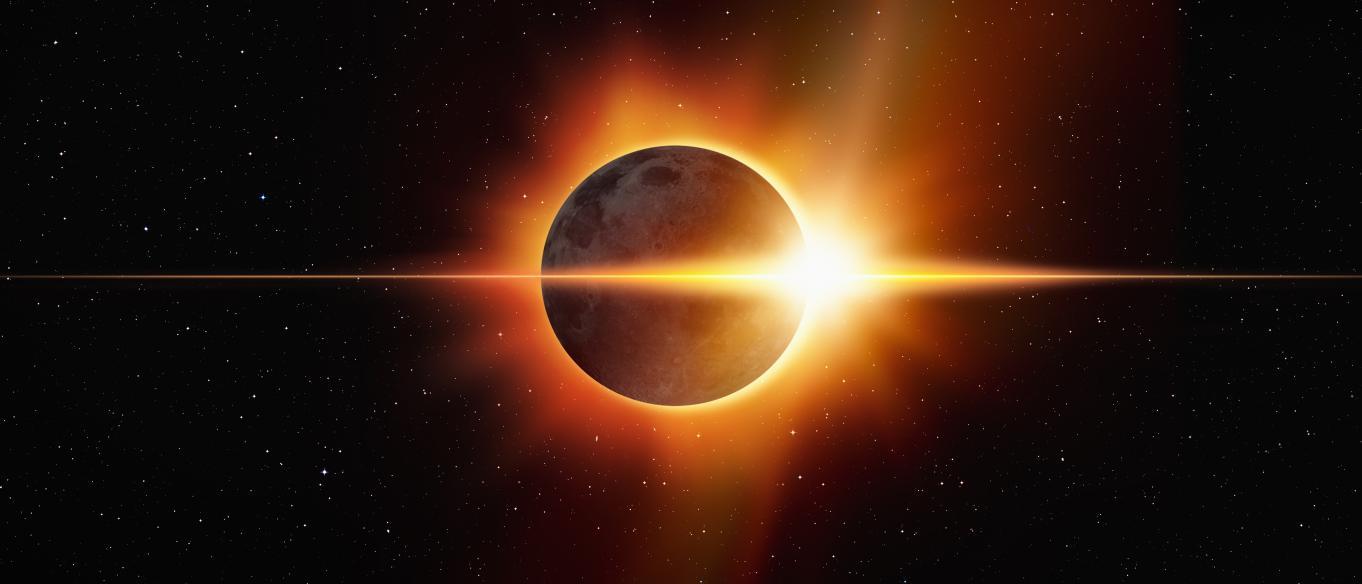
On Monday, April 8, beginning at 2:08 pm, a solar eclipse will be visible across America. Because here in Philadelphia, we are off the path of totality, we’ll see a partial eclipse, the first in this region since August 21, 2017. Around Philadelphia, the moon will cover 90% of the sun. With 10% of the sun’s surface exposed, it’s still too bright to view without eye protection. You must use approved, certified eclipse viewing glasses to protect your eyes while viewing the eclipse. You’ll have an awesome, authentic science experience viewing a celestial phenomenon most people have never seen before.
Where to Go and How to View the April 8 Total Solar Eclipse
The path of totality across the US will be a narrow strip approximately 115 miles wide, crossing portions of 15 states from Texas to Maine. To experience the awesome beauty of an annular eclipse, you’ll have to get to Texas, Oklahoma, Arkansas, Missouri, Tennessee, Kentucky, Illinois, Indiana, Ohio, Michigan, Pennsylvania, New York, Vermont, New Hampshire, or Maine.
No possibility to travel? Then you’ll be among the vast majority of viewers in areas adjacent to the path of totality who will experience a partial solar eclipse. The moon appears to cover less of the sun as a viewer’s distance away from the centerline increases. For this region, 90% of the sun will be covered by the moon, leaving a brilliant 10% still visible. The result? The sky will dim as if the sun were covered by a high deck of thin cirrus clouds. None of the effects of an eclipse will be seen and proper eye protection must be used throughout the 2 hour, 27-minute event. With eye protection for safe, direct viewing or indirect viewing with a simple pinhole projector, you’ll see the moon’s disc slowly slide between the Sun and Earth. Sunglasses will not provide adequate protection for direct viewing. Specialized viewers reducing the Sun’s brightness by 99.98% or more are required.
If weather conditions prevent direct viewing in our region, try one of these websites that will carry the eclipse live from points along the eclipse path: exploratorium.edu/eclipse, or greatamericaneclipse.com.
For a full overview of April’s solar eclipse, check out NASA’s eclipse website.
Try This At Home
You can reproduce the pinhole camera effect using objects or materials that already have small holes. On a sunny day before the eclipse, practice using a colander (spaghetti strainer) from the kitchen or a piece of Masonite pegboard to create small sun images.
To use either, stand with your back to the sun and allow sunlight to fall onto the colander or Masonite. The small white dots seen on a floor or wall underneath them are images of the sun. During the eclipse, each dot will show an image of the eclipse in progress!
What happens if you move the colander or board closer or farther from the wall? What other household items can you find that will produce eclipse images in the same way?
Maximize Your Eclipse Experience
DIY: Pinhole Solar Viewer
Use materials found in a typical home to make a "Pinhole Camera" viewing device that will allow for easy, inexpensive, and safe solar observing.
Eclipse Viewing Glasses - SOLD OUT
Out and about town that day? Be prepared to observe wherever you are. Be sure to get CE, ISO, and NASA-approved eclipse viewing glasses from TFI’s SciStore before the event and watch from wherever you can see the sun.
Solar Eclipse Viewing Party
Join us for a free community-wide viewing party as the moon takes center stage to cast its shadow on the Earth!
A Note About Eye Safety
Any small part of the sun is just as bright as the entire sun and should never be observed directly without proper eye protection. Protecting your eyes is the most important precaution of eclipse viewing. However, during totality when the sun is completely covered by the moon, the event can be observed without eye protection but only during totality when the sun is completely covered by the moon. Extreme caution must be used during this time because as we observe the spectacular view, we forget the moon is still moving and our eyes could be exposed to the sun’s bright disk while observing without eye protection. Set an alarm on your smartphone or watch to alert you to stop viewing directly 30 seconds BEFORE totality ends AT YOUR LOCATION!



